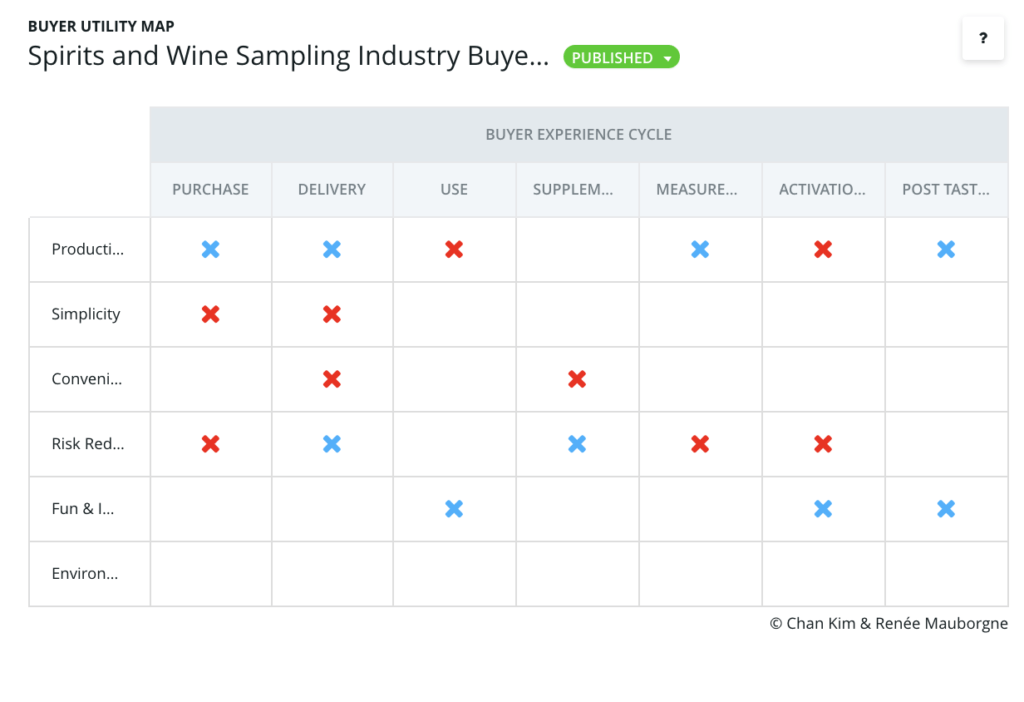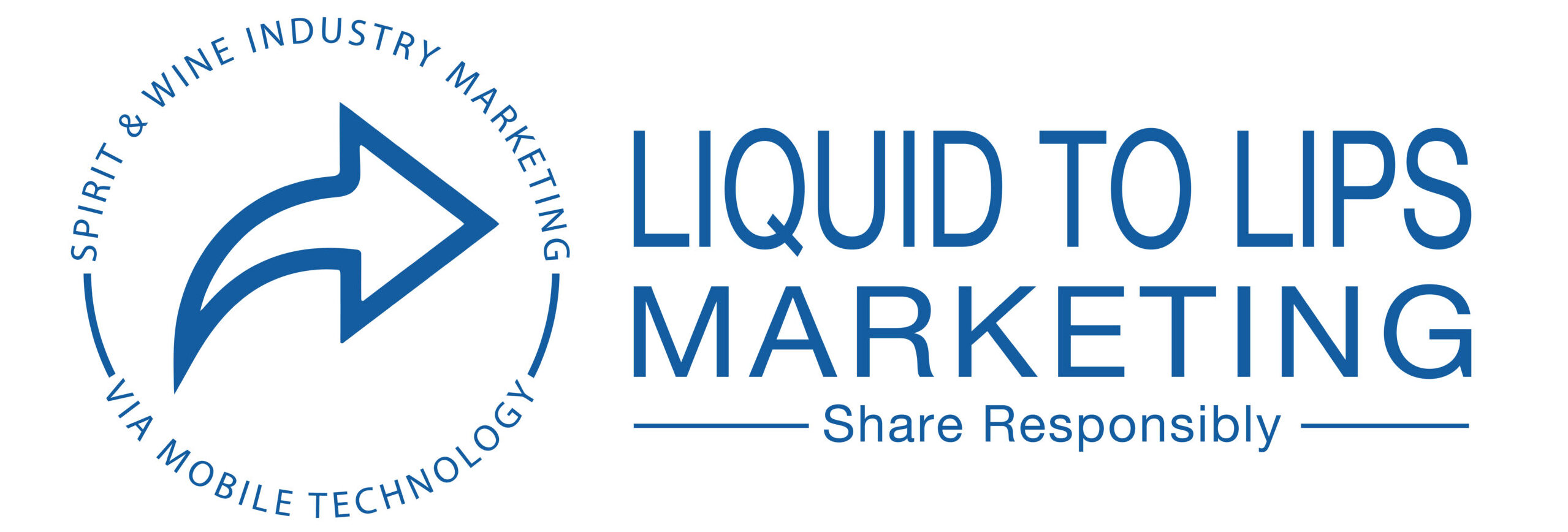Spirits, wine, and beer brands; you are being poorly served. You likely know this already. We have taken a look at the way brands attempt to attract new customers. The efforts are poor most of the time. Perhaps a better way to say it, the efforts are good, the results are poor.
We’re looking at the way spirits companies showcase their brands. In today’s spirits and wine business in the US, the distributor has purchased the products from distilleries and vineyards or “suppliers”.
There is a LOT of money at stake.
Diageo, the world’s largest spirits and wine conglomerate with 20% of the global market spends about $2.5 billion annually up and down the supply chain on marketing related activities.
Sampling and tastings have been a proven way spirits and wine brands get their “liquid to the lips” of prospective consumers.
The problem is they don’t have a clue who those customers are.
Today, We’ll introduce a graphic called a Buyer Utility Map.
It showcases the problems facing the industry.
This is a Buyer Utility Map for spirits and wine brands buying sampling and tasting services.

The graphic analyzes the Buyer Experience Cycle (BEC).
Your buyer’s experience can usually be broken into a cycle of six stages. These run more or less sequentially from purchase to disposal. I added a seventh stage in the spirits industry example.
The vertical access provides our Utility levers. These are the tools or levers brands can manipulate to provide better utility for buyers.
Cutting across the top are stages of the buyer’s experience.
By locating a new offering on one of the spaces of the buyer utility map, managers can clearly see how, and whether, the new idea creates a different utility proposition from existing offerings. This of comparing Jack Fire to other whiskey offerings by Jack Daniels.
In our experience, managers all too often focus on delivering more of the same stage of the buyer’s experience. They get stuck in ruts.
In our Buyer Utility Map, the red X’s denote the current issues facing our spirits and wine industry buyers.
They are hurdles in the overall effectiveness of the Buyer Experience Cycle.
In the Purchase of sampling and tasting programs, simplicity and risk reduction are hurdles for brands.
Samplings and tastings are simple enough but they is considerable risk. Why? Because the results are so hard to measure.
Pulling together a sampling or tasting program is complex. There are more moving parts than one may imagine.
Review a typical state’s regulations around samplings and tastings and you will immediately identify with the complexity. South Dakota’s example here.
With respect to risk reduction, there are hurdles in abundance. When you rely on the work of dozens of others to pull off your expensive campaigns, the risk goes up.
In the Delivery of sampling and tasting programs, simplicity and convenience for the brand buyers and participants is non-existent.
As mentioned before, the logistical complexities of sampling and tasting events are monumental.
Moving quickly through Use of sampling and tasting programs, ease of use in these programs is not a value prop.
Brands are forced to manually tackle a lot of issues and hold their agencies accountable for activities that are not in their core business.
Questions to consider:
- How much product was given away during the sampling?
- How many sales were made the day of the sampling? Did you convert 30%, 40%?
- How did sales from weeks & months prior at this location compare to those that followed the event?
- How did this event measure up to past events?
- Did the event draw any media coverage?
- Was the event shared on social media?
- Did you provide a way for consumers to give you their email addresses or other contact info?
- Drawings, contests, newsletter signups?
- Do you have a method to attain customer feedback from the event?
There are lots of areas involved in holding an agency accountable for the success of outsourced samplings and tastings.
There are reasons that it is said that brands spend upwards of $30 dollars a head to get people tasting their products.
In Buyer Utility Map parlance, Supplement means, what else was required to successfully deploy the product, i.e. the tasting/sampling.
In this case, generally, an agency is involved. If not an agency, all the trappings of one. Someone has to promote, be present, be educated on the brand, smile, and track the limited interactions that take place.
With small brands, this is generally a closely held employee or a founder. With large brands, it’s an agency employee who knows and cares nothing about your brand.
Hiring an agency is expensive and candidly, just the way it’s done. There are certainly brand ambassadors and the like and in most cases, even those are hired and trained by the agencies, thanks to antiquated laws governing the alcohol business.
When it comes to Measurement, current sampling and tasting programs are a joke.
There are few technologies utilized to accurately measure who attends an event, what they enjoyed while present, and what they did after the experience.
Intent to buy is a b.s. metric
Agencies understand that the only measurements involve “intent to buy surveys”, some measurement on depletion numbers in the weeks and months following a campaign, and other age-old, less than current, methods of measuring sales.
In the Activation area, another keyword in the spirits and wine business, people are hired to do things ranging from calling on retailers and venues to building end cap displays to begging bars and restaurants to feature the brand on the back bar and menu.
In other words, activation is the ability to translate sampling and tasting “buzz” into requests for the product at bars, restaurants, and retailers.
In the category I added, Post Tasting Marketing, brands don’t even currently have a shot.
They don’t know who attended their tasting and sampling events. They don’t know who participated in the activation activities at the bar or venue. They just don’t know squat.
All of these hurdles are exactly what is happening in the sampling and tasting programs of spirits and wine brands.
So what’s a brand to do?
In reviewing the Buyer Utility Map above, there are blue X’s that represent an alternative. In the areas where blue X’s appear, Shared Spirits and its technologies eliminate the hurdles in those categories. Candidly, the entire Buyer Utility Map could feature blue X’s thanks to the way Shared Spirits has approached the problems facing industry.
Let me provide one example that if the technology were employed, there would be massive uptake of the brand and more buzz generated than one could measure.
Let’s assume there are 100,000 Maker’s Mark Ambassadors. With the technologies and systems represented by the blue dots, we could identify where each Maker’s Mark Ambassador shops.
We can know how often they go to their favorite retailer and restaurant.
We can know their ancillary purchase habits.
We can compliantly share a drink/cocktail or coupon valid for their favorite drink or bottle at their favorite locations.
We can equip them with drink credits of their own and subsequently measure their true effectiveness as ambassadors.
We can know how effective every marketing dollar is related to depletion targets.
Most importantly, we can identify noncustomers of Maker’s Mark from other bourbon buyers and proactively migrate them into the customer fold.
Know how to measure event success
What’s the point of running a campaign or any event for that matter, if you have no way to measure its success?
How will you know if your time, energy, and money were invested into something useful? Understanding what you want to achieve with any event is a great start. However, without viewing your strategy and implementations outside how you will capture nonconsumers is a risky way to spend money.
With the advent of ambassador and influencer marketing, Shared Spirits provides a Blue Ocean Strategy influenced brand activation pathway that may serve brands far better than previous models.
To learn more about growing your brand and the services Liquid to Lips Marketing offers, request a demo from Co-Founder Sherman Mohr or one of the team. If you would like to discuss Shared Spirits tech for your brand, schedule a call, we want your business. Schedule Here!

